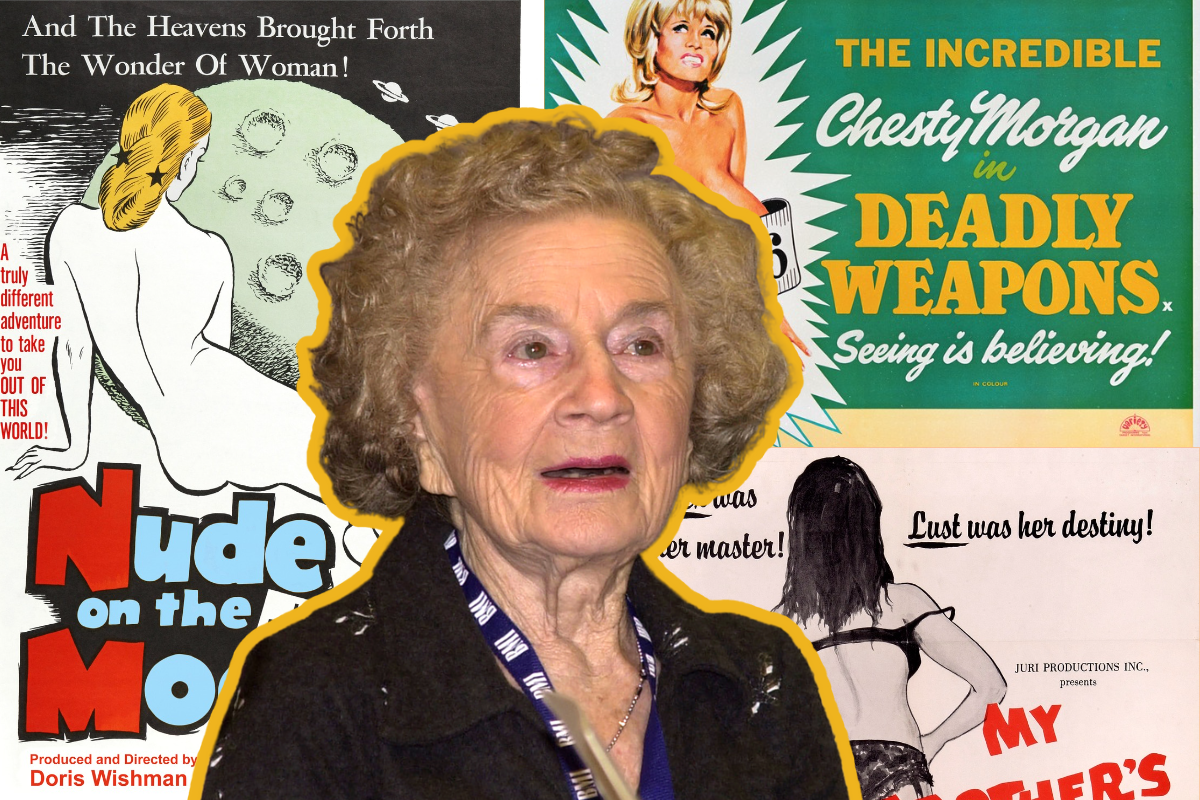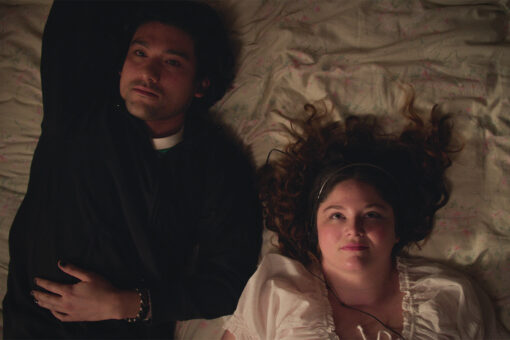Movie directing has a boys’ club problem. Women have been fighting for their place behind the movie cameras since the dawn of the medium, and thankfully some have been able to add the title of “director” to their resumes in spite of the sexism in the industry.
In the silent era you had Mabel Normand creating comedies alongside Charlie Chaplin, and later on you had a few actresses-turned-directors making their marks in cinema like Barbra Streisand. However, there is one woman who has directed more films than any woman in film history. You may be guessing now — who is this woman? Maybe it’s Kathryn Bigelow, the first woman to win the Best Director Oscar? Or maybe it’s someone from overseas, like Céline Sciamma? What if I told you this woman is someone you most likely have never heard of? What if I told you the woman who holds the record for directing the most feature-length films was a Jewish widow who started directing sexploitation and nudie films in her mid-to-late 40s?
If you’re thinking I’m joshing you, I promise I’m not. Doris Wishman is the woman that holds the record for directing more feature-length films than any woman in the history of movies.
Doris Wishman’s life, like many women of the 20th century, can be told in two acts. The first act of Doris’s life could be described as “the Jewish girl next door.” Born on June 1, 1912, in the New York City borough of The Bronx, Doris dreamed of becoming an actress, even taking lessons alongside future film legend Shelley Winters. While trying to make the rounds as an actress, Doris married her husband Jack Abrams. Jack and Doris’s marriage would end abruptly in 1958 when Jack died of a heart attack. Not knowing what to do with herself, Doris decided she would pick up a camera and a pen — and from there the second act of her life, as Queen of the Nudies, began.
Doris released her first film, “Hideout in the Sun,” in 1958. Her career, which continued all the way into her 90s, went through many underground incarnations. She began making nudist films through the late ’50s and early 60s, and then transitioned into the sexploitation and soft core pornography genres of the late ’60s and ’70s.
Doris never stated (as far as I could find) why she decided to make what were then called “nudie cuties.” If I had to guess, I’d say part of the reason is because she already had connections to the underground film world. In the ’40s and early ’50s, she worked as a film booker for her cousin, Max Rosenberg, who was an independent film distributor specializing in art house and exploitation films. The other reason why I think Doris got into this underground film space is because she saw a lack of exploitation films that were made with a feminine touch. In general, the exploitation market was dominated with men making these movies for the male gaze. I imagine Doris saw this problem and thought with her point of view — the feminine point of view — she could help to give the genre the perspective that was missing. For example, when the lead character of her 1965 film “Bad Girls Go to Hell” is sexually assaulted, her assault is not looked at as “entertainment,” but as a serious crime with serious effects. When you watch a Doris Wishman film, you’ll see a woman’s naked body on display, but it never feels like you’re supposed to look at her with lust, rather with admiration. Doris wanted the viewer to see the power a woman’s body has, even with her clothes on.
The most infamous Doris Wishman films are her semi-action films “Double Agent 73” and “Deadly Weapons.” Both these films star Chesty Morgan, a Polish Holocaust survivor turned burlesque and exploitation star, known for her 73-inch breasts. Doris could’ve had Chesty on display to only be lusted over, but instead she shows Chesty’s breasts as her super power. In “Double Agent 73,” her breasts are implanted with a camera so she can go undercover and photograph underground mafia crimes and in “Deadly Weapons,” Chesty’s breasts are used to smother evil men as revenge for murdering her boyfriend. Both these storylines are, yes, camp, but they show how the genre could be used to empower the cis feminine body and not totally exploit the bodies of the female stars.
In a late in life interview on Conan O’Brien, Wishman sits next to the legendary film critic, Roger Ebert while he notes how Wishman’s films almost have a prudish quality to them. He’s not the only man to describe Doris as “prudish” — in my research, I found multiple men saying the same thing. Personally, I don’t find Doris to be a prude. I see Doris as a woman who saw a space that needed to be filled and made films that were softcore movies for the feminine gaze. She was ahead of her time; these films go against the second wave feminist movement’s anti-porn stance. She allowed women and feminine people to see how they could take ownership of their sexuality and bodies, which is more in line with the intersectional feminist movement and modern feminist values of the 21st century.
Doris Wishman’s feminism feels very in line with my own Jewish identity. Being a Jew actually made exploring my sexuality feel extremely natural due to a core belief in Judaism, which is to never stop questioning. This belief instilled a sense of never ending wonder and wanting to understand myself as a full person, especially sexually. Doris never talked about her Jewish identity and the connection of her Jewishness in her work, but as I learn more and more about her, I can’t help but think she had a similar outlook, since she made such a life jump when entering the exploitation genre. This need to explore and grow is not only very feminist but also very Jewish. It makes me feel close to Doris in our shared curiosity and Judaism.
Doris once said she would be “making movies in hell.” I don’t know if there is hell — but if there is, I’ll be sat for anything Doris makes there.



